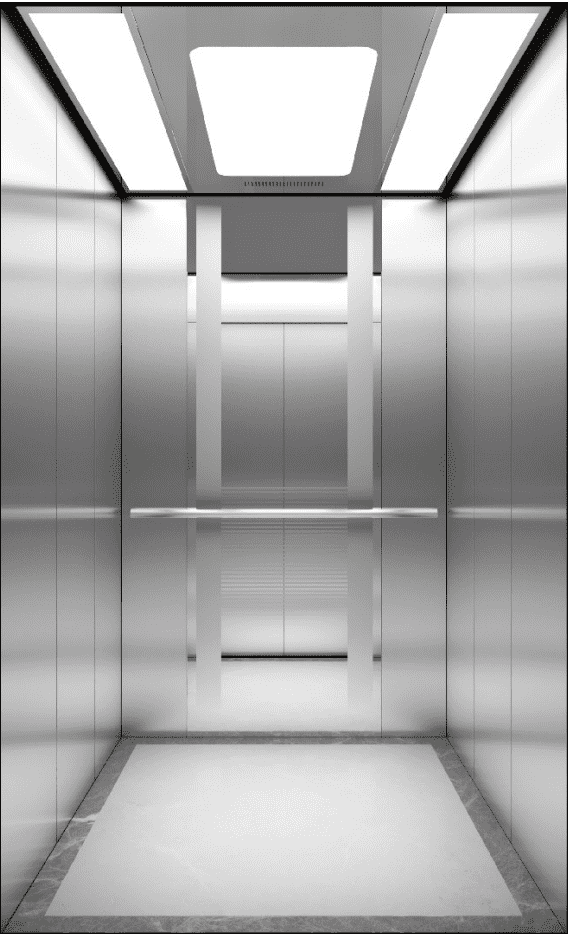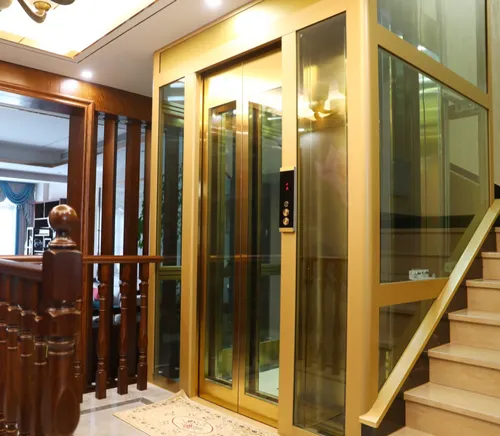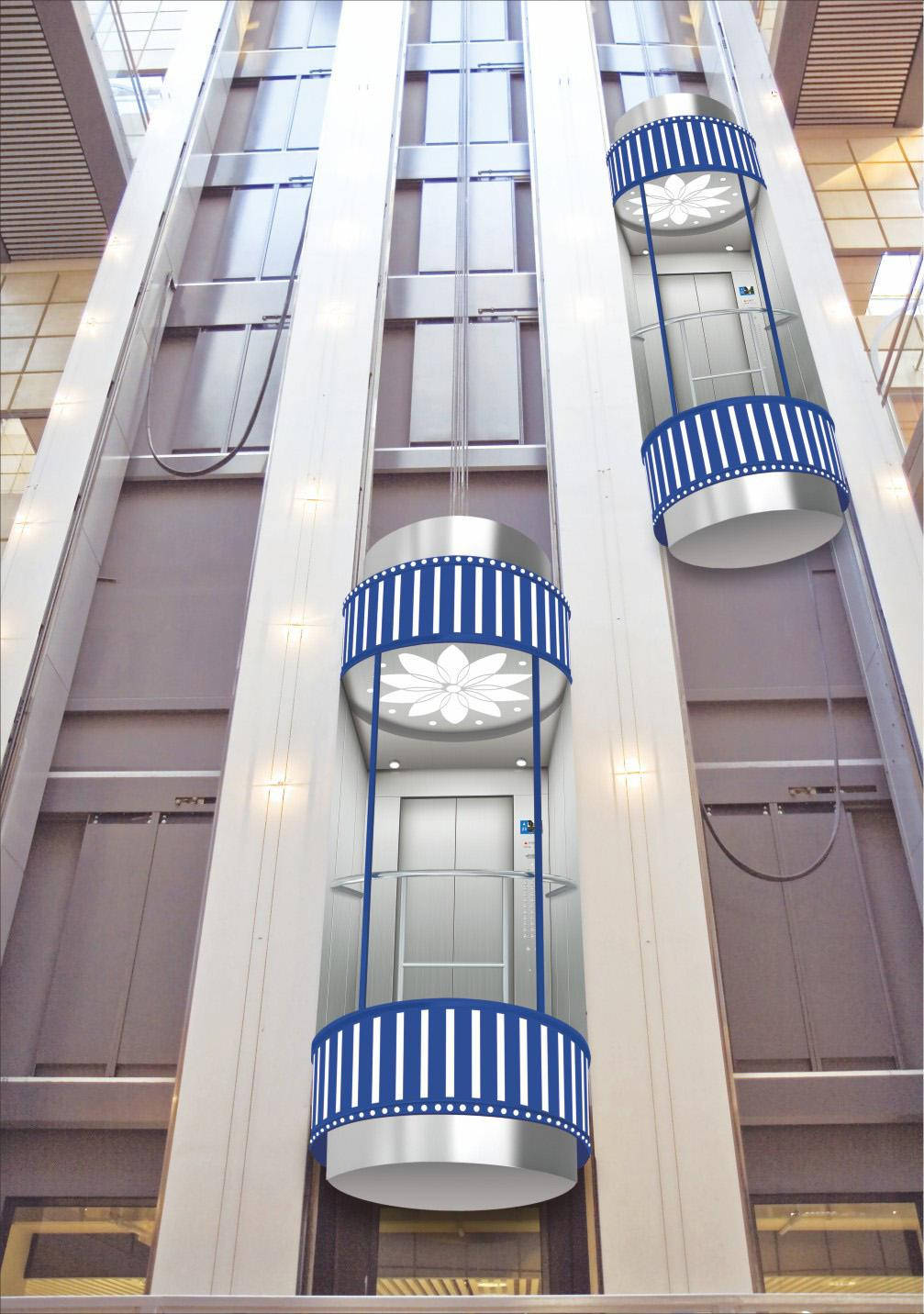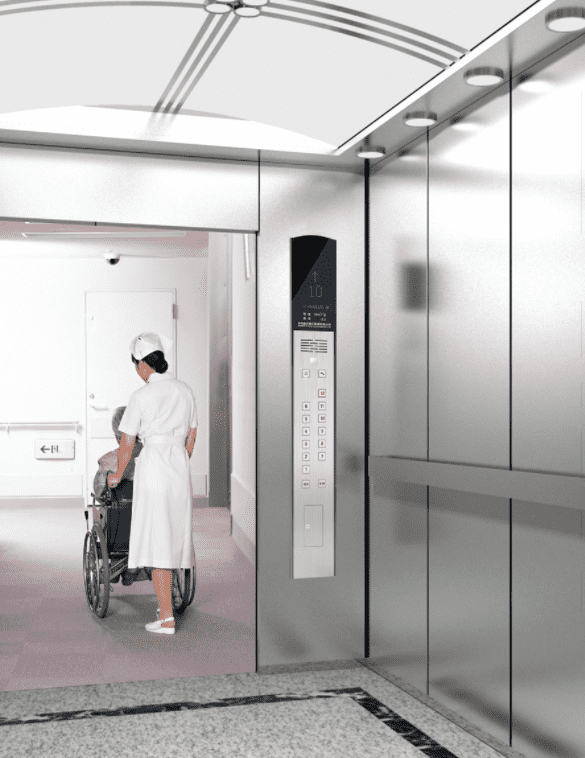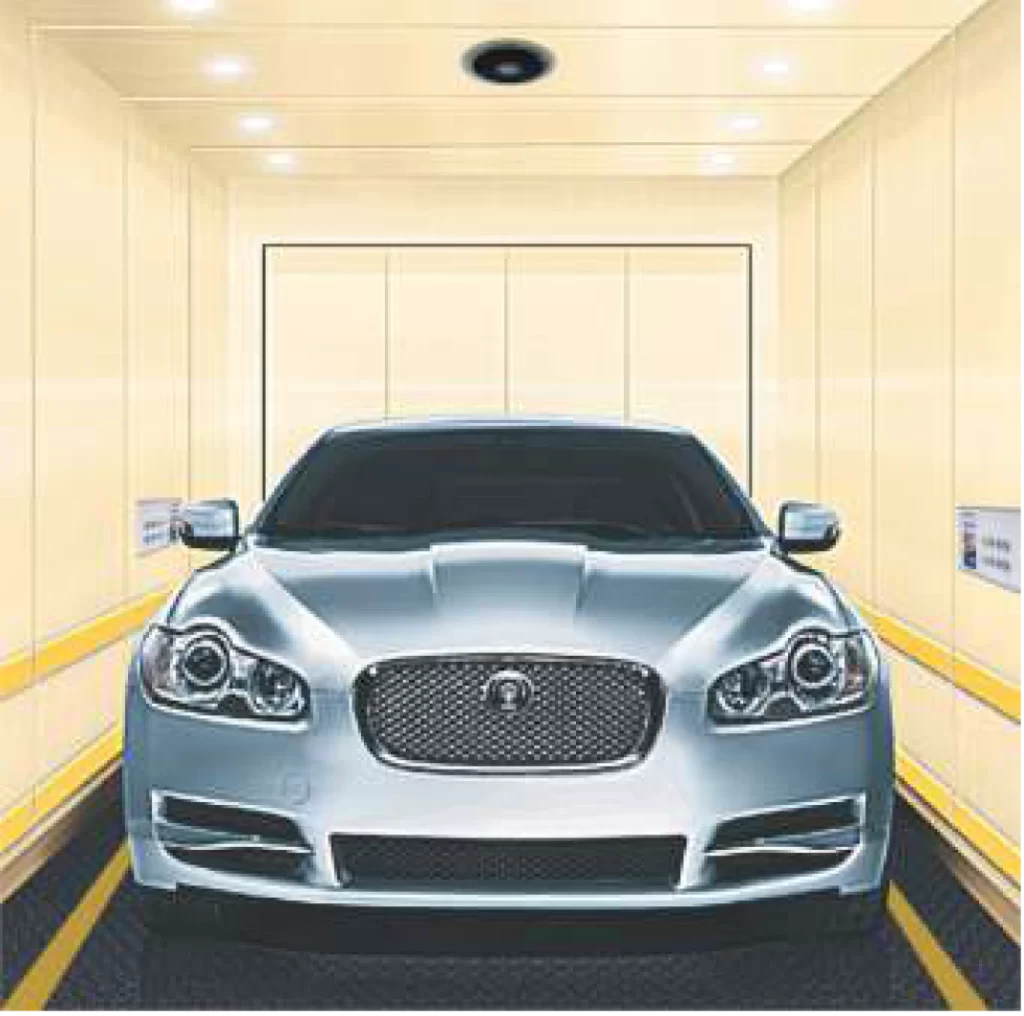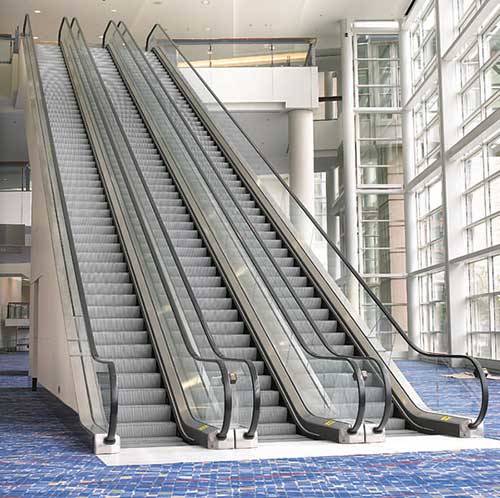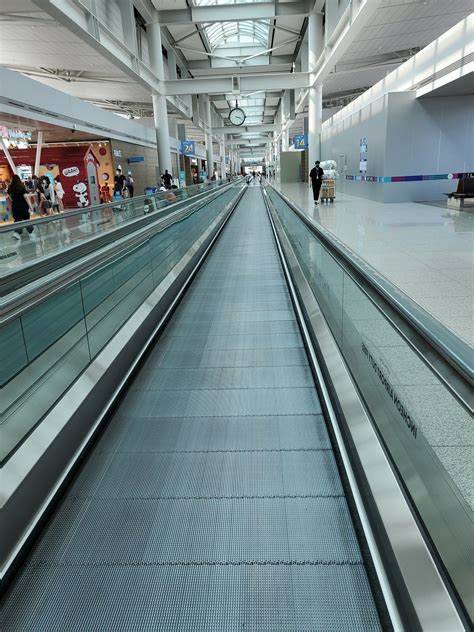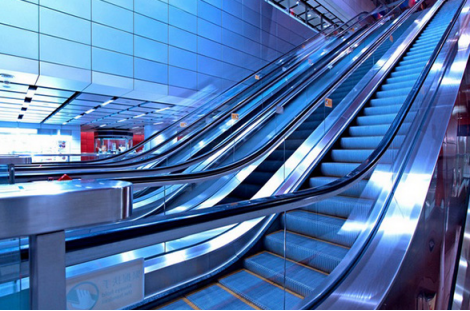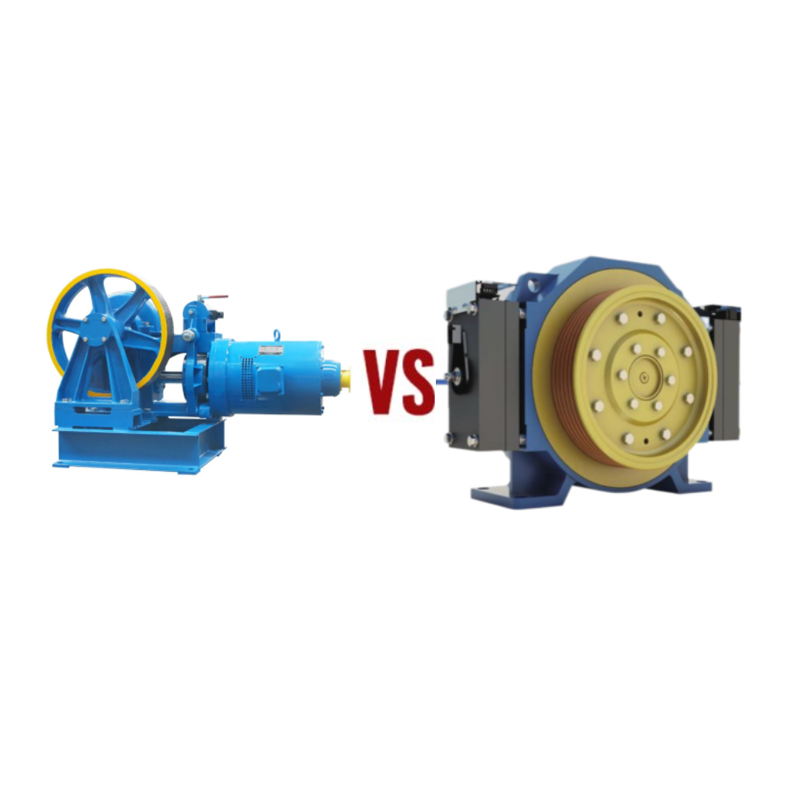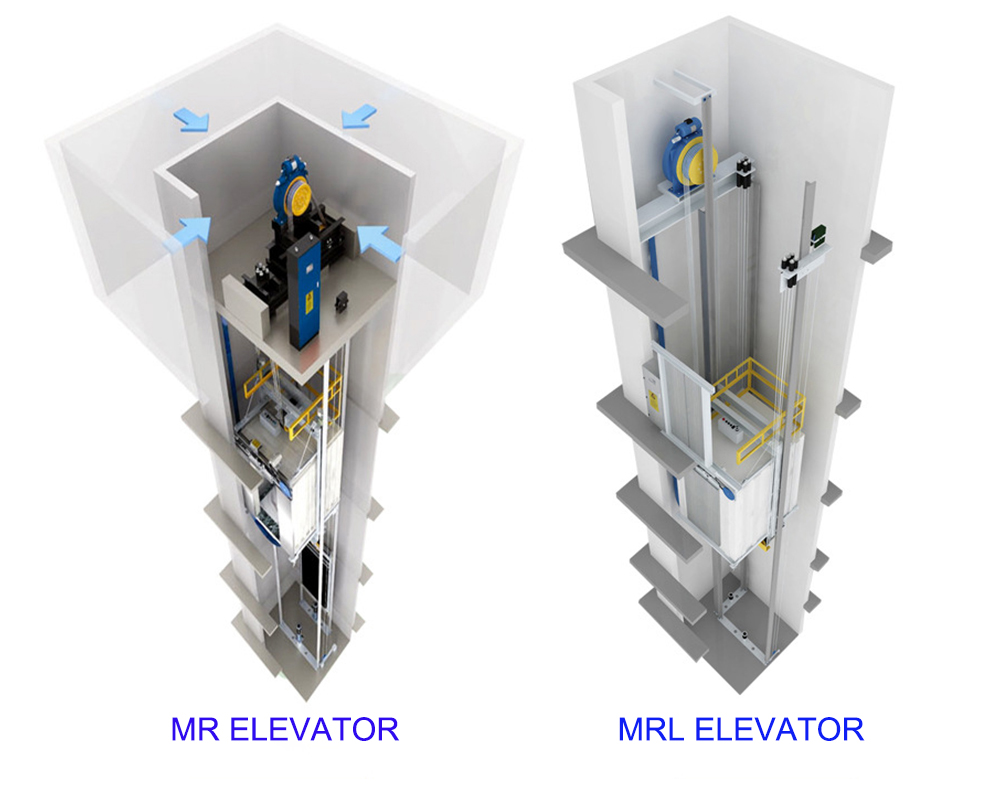Learn About Elevator Types | Everything You Need to Know
Choose the right elevator for your building! This article explains the different types and their maximum capacities, so you can make an informed decision.
Table of Contents
1.Elevators are classified according to their uses
2.Six types of elevators are classified according to their drive methods
3.Elevators are classified according to their speeds
4.Four types of elevators are classified according to their working methods
5.FAQs
6.Conclusions
9 Types of Elevators Classified by Different Uses
1. Elevator for passengers
The elevators designed for carrying people between floors are commonly found in office buildings, hotels, and other public spaces. They are widely known as residential elevators, departmental lifts, or simply as lifts, and are the most commonly used type of lift globally.
Passenger elevators generally consist of two cabins to separate passengers and freight, and have a maximum capacity of 25 people depending on the model. These elevators usually travel at speeds of 0.5 to 1 meter per second (1-2 mph) and stop every 20 meters.
A freight elevator is specifically designed to transport heavy and bulky items, such as furniture and construction materials. It is commonly used in industrial settings and warehouses due to its ability to accommodate oversized loads.
Also referred to as platform lifts or platform trucks, cargo elevators are extremely useful for moving heavy items in a warehouse or industrial setting.
The size of a cargo elevator can vary from 8 feet by 8 feet to 14 feet by 14 feet, and in some cases even larger. Its dimensions are determined by the contents being transported and the quantity of items being moved at a time.
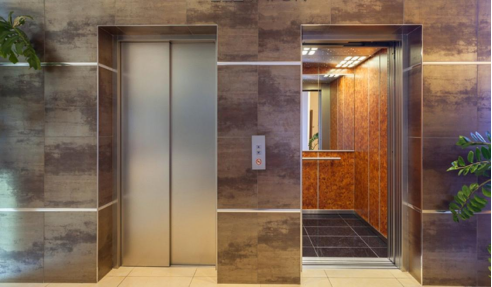
2. Elevators for cargo
A freight elevator is specifically designed to transport heavy and bulky items, such as furniture and construction materials. It is commonly used in industrial settings and warehouses due to its ability to accommodate oversized loads.
Also referred to as platform lifts or platform trucks, cargo elevators are extremely useful for moving heavy items in a warehouse or industrial setting.
The size of a cargo elevator can vary from 8 feet by 8 feet to 14 feet by 14 feet, and in some cases even larger. Its dimensions are determined by the contents being transported and the quantity of items being moved at a time.
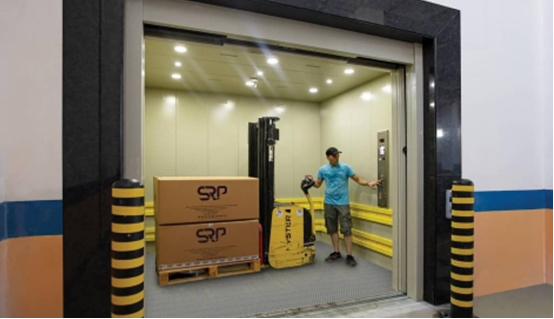
3. Elevator in a hospital
The hospital elevator is an elevator specifically designed for use in hospitals. It functions as a vertical mode of transportation, and is also referred to as a bed elevator or lift.
Hospital elevators have different designs depending on their purpose and function. For example, they may be used to move patients from their rooms to the operating room, or to transport them between floors in different buildings.
The hospital elevator must be able to accommodate beds with wheels attached to them, so that patients can lie flat during transportation from their rooms to the operating room without any risks of falling out. It is important for the elevator to be designed in a way that allows for easy movement around corners and down hallways without any obstructions.
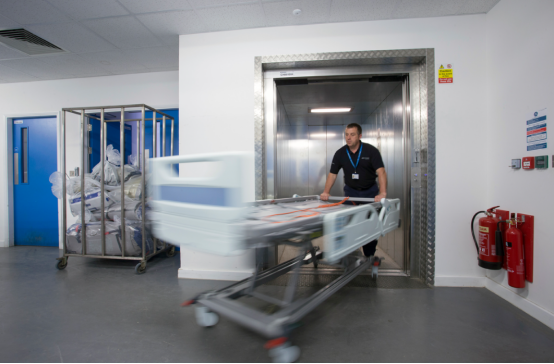
4.Escalators
Think of an escalator as a convenient way to move between floors in a building. It’s essentially a constantly moving set of stairs that are powered by a motor and can transport people up or down. The steps stay flat as they glide along tracks.
Escalators are utilized across the globe to transport pedestrians in areas where elevators are not a feasible option. Popular locations for these machines include department stores, malls, airports, transit systems, conventions, hotels, and arenas. Escalators are often preferred over moving walkways for longer, uninterrupted paths.
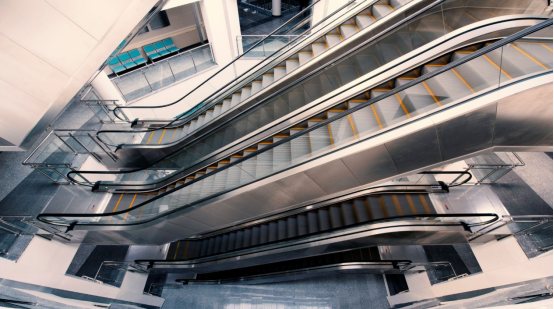
5.Elevators for sightseeing
Experience breathtaking views of the city from a sightseeing elevator that takes you to the top of a building. This convenient and unique attraction is the perfect way to see your surroundings from a whole new perspective.
Sightseeing elevators are like regular elevators, but with modifications to fit more people and create a better riding experience. Their popularity has increased as cities seek to attract tourists.
A sightseeing lift is available at various popular tourist destinations around the globe. The Eiffel Tower in Paris is an illustration of this kind of lift, capable of carrying up to 20 individuals on a single ride up to a height of 1,665 feet (508 meters).
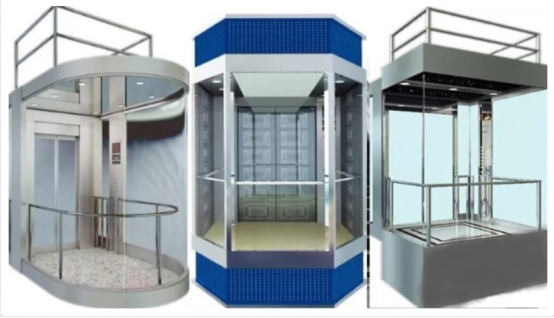
6.Elevators for homes
Home elevators are compact, movable elevators that can be set up in a variety of residential settings. They are commonly utilized for reaching higher levels within a building when stairs are not an option, like upper-floor apartments or basements. However, they are also beneficial for individuals who require help navigating their homes.
Check out our extensive list below featuring 9 different types of elevators commonly used for various purposes. If you’re still unsure about which elevator is best for you, please don’t hesitate to reach out for personalized advice.

7.Elevators for vehicles
A vehicle elevator is a mechanism that moves vehicles both vertically and horizontally. It can exist as a standalone structure or be integrated into a building, and is often utilized in parking garages to transport cars and other vehicles between floors. These elevators are also commonly found in warehouses, factories, and other commercial settings for the purpose of moving vehicles between different levels.
Vehicle elevators can be powered by either electricity or hydraulics. While hydraulic lifts are less costly, they need more upkeep and have speed limitations. On the other hand, electric lifts can operate at higher speeds and reach greater heights, provided enough power is available from the building’s electrical system.
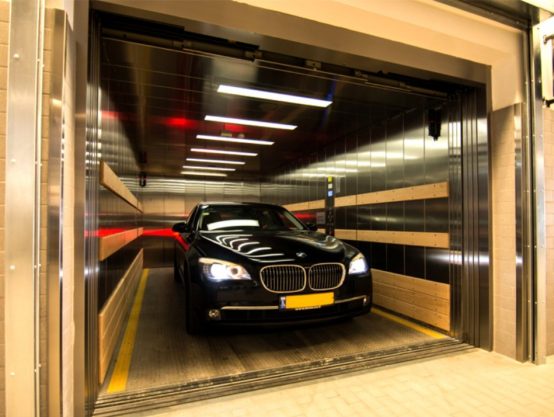
8.Elevator for ships
A ship elevator is a specialized type of marine cargo elevator designed to move cargo between a ship’s upper and lower decks.
The ship elevator is a horizontal steel tray that hangs off the side of a ship and can be controlled via ropes and pulleys. Additionally, it is equipped with an electric motor for remote operation from within the ship.
In 1852, HMS Warrior, one of Britain’s first ironclads, was equipped with a ship elevator, marking its first-ever
use.
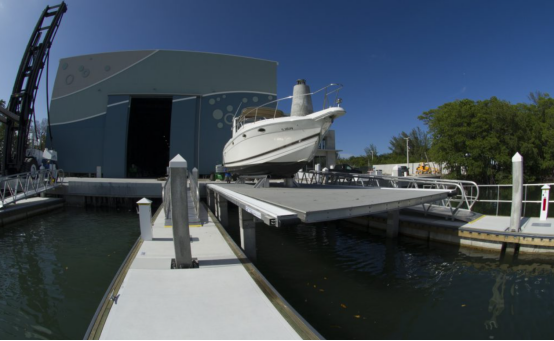
9.Elevator for construction
A construction elevator, also called a scaffolding elevator or lift, is an essential type of elevator used in construction projects.
Primarily employed in the construction industry, this device enables the transportation of goods and provides access to buildings or areas that are undergoing construction or repair. Construction elevators are commonly utilized for the movement of heavy items such as concrete blocks, bricks, sandbags, and steel bars.
These elevators are commonly utilized in multi-story buildings and can also be helpful in damaged buildings during natural disasters. They provide a quick and efficient way for people to reach upper levels without stairs or ladders, which is especially valuable during emergencies.
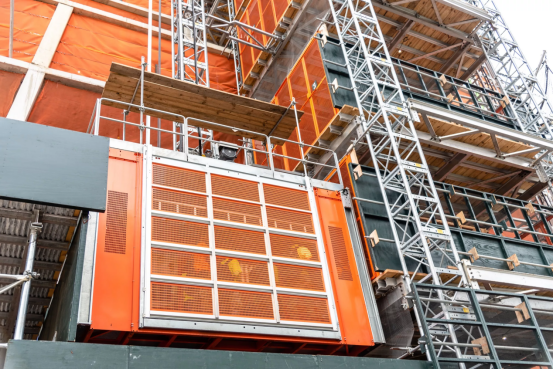
Consider the following drive methods for classifying elevators into 6 types.
1.Elevator with C.
The A.C. elevator is a type of elevator that is ideal for high-rise buildings. It differs from a conventional elevator in that it utilizes an A.C. motor instead of a D.C. motor, providing greater torque and power for smooth and efficient operation.
One major advantage of A.C. elevators is their ability to run continuously for extended periods of time. This feature makes them the perfect choice for larger, tall buildings with high volumes of people.
2.Elevators powered by DC
A D.C. elevator is a kind of elevator that utilizes direct current to operate its motors. These elevators are often found in areas without access to a power grid, like underground mines and subway stations.
Rewrite instructions: D.C. elevators can also be found in older buildings that have been converted from A.C. to D.C. power. Converting to D.C. is a more cost-effective option than completely replacing the system with new wiring and components in buildings that originally had A.C. power.
3.Elevator with hydraulics
This type of elevator utilizes hydraulic power to raise and lower the car, making it more energy efficient and allowing for multiple stops.
Introducing hydraulic elevators – the energy efficient and versatile solution for your building’s vertical transportation needs. With a hydraulic power system and piston technology, these elevators can make more stops and save you money on installation costs. Perfect for residential buildings and compact spaces.
4.A rack-and-pinion elevator
One type of hydraulic elevator is the rack and pinion elevator. It features a rack and pinion system that enables the car to move up and down with ease. This system is composed of a metal rail running along the elevator shaft and two wheels on either side. As one wheel travels up or down the rail, it also turns the connected wheel, which in turn rotates the gears in the elevator motor to lift or lower the car smoothly.
Rack and pinion elevators are commonly used in residential buildings, specifically in small apartments or condos with limited space. They can be installed inside or outside, allowing for a comfortable fit without appearing obtrusive on your property.
5.Screw Elevators
A screw elevator is a tool that moves material up and down a well. It works by using a long cable that is wrapped around a large screw at the surface and unwound as it goes down the well. An electric motor powers the rotation of the screw to transport material in either direction.
Screw elevators have a variety of uses, such as drilling wells for oil and gas, pumping water for irrigation, and lifting individuals out of caves.
6.Elevator with linear motors
For taller buildings, a linear motor-driven elevator is the perfect solution. With a platform on rails, it can move both vertically and horizontally, making it efficient and practical.
The platform of linear motors can be moved up or down by applying different amounts of current to the electromagnets. Unlike gears or cables, the magnets do not wear out, making these elevators more durable than other types.
Various Speeds Classify
1.Slow-Paced Elevators with Speeds Below 1.0 m/s
Elevators classified as slow-paced operate at a top speed below 1.0 m/s, and are alternatively referred to as slow-speed elevators. According to the International Building Code (IBC), all passenger elevators must adhere to the slow-paced classification. These elevators are primarily used in residential buildings, office buildings, hospitals, and other structures for short-distance vertical transportation, such as moving between floors.
2.Moderate-Velocity Elevators Ranging from 1.0 to 2.0 m/s
Elevators in the moderate-velocity category are characterized by their operating speeds, which range between 1.0 to 2.0 m/s, which are suitable for buildings with a moderate number of floors, such as 5 to 20 stories. Short travel times, with a maximum hourly capacity of 1,200 people, and a top speed of 150 meters per minute are the features of moderate-velocity elevators. They are commonly found in commercial buildings, schools, hotels, and similar establishments.

3.Rapid-Paced Elevators Exceeding 2.0 m/s
Rapid-Paced Elevators achieve velocities surpassing 2.0 m/s, with their high-speed functionality crucial for reducing wait times, especially in large buildings with many levels of people moving up and down throughout the day. The fastest rapid-paced elevators in the world travel at 3.1 m/s. This speed is achievable due to special construction techniques and materials that allow the elevator car to withstand such high speeds without being destroyed by centrifugal force. Utilized in high-rise buildings with over 15 stories, where elevator rides exceed 30 seconds.
4.Ultra-High-Speed Elevators Surpassing 5.0 m/s
With a speed more than 5.0 m/s, ultra-high-speed elevators are ideal for use in high-rise residential structures, office buildings, hotels, shopping centers, and other areas with high foot traffic.
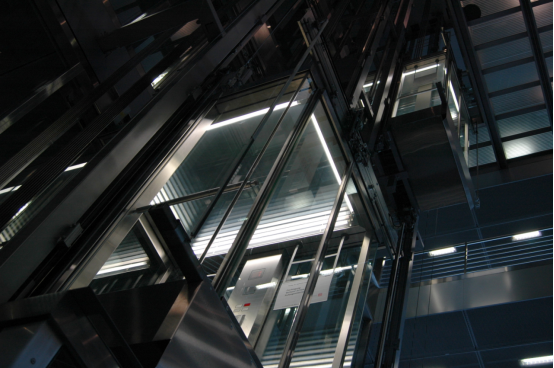
Elevators come in various types, each suited to different buildings and settings. Choosing the right elevator based on building height and specific usage needs can significantly boost operational efficiency and convenience.
Four types of elevators are classified according to their working methods
Imagine standing at the base of a towering skyscraper, how do we reach the pinnacle? The answer is obvious the elevators. The first passenger elevator was introduced in the late 19th century, since then, the power of vertical transportation have revolutionized the way we live and work. But few people know there are multiple types of elevators. Let’s explore the diverse world of elevators, from low-speed to super high-speed elevators, each with distinct features and uses. We also look at their working mechanisms, ranging from classic traction to vacuum (air-driven) elevators.
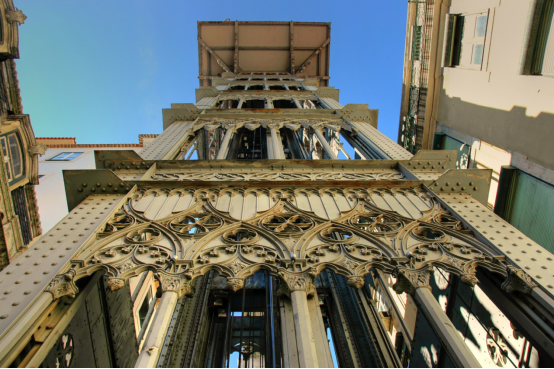
Various Working Mechanisms Classify
1.Traction elevators
Traction elevators are a traditional type of elevator that utilizes pulleys and steel ropes within the elevator shaft to move the cabin vertically. The cabin is connected to a hoisting rope, which is in turn connected to an electric motor at the top of the shaft. As the motor rotates, it pulls the hoisting rope, which in turn pulls another rope running at a 90 degree angle. This second rope is connected to a counterweight or balance weight at the bottom of the shaft, which also moves upwards. The counterweight pushes against the bottom of the cabin, causing it to ascend at approximately 1 foot per second and descend at about 2 feet per second. Traction elevators are typically used in buildings exceeding 12 stories and are known for their high load capacity and speed.
① Geared Elevators Type
Geared elevators, also known as geared traction elevators, in particular, feature a direct connection between the motor and the hoisting drum through a drive gear. The drive gear has teeth that mesh with a rack. The rack is attached to the hoisting drum, and as the motor turns the drive gear, the hoisting drum rotates as well. The friction between the teeth of the gear and the rack generates sufficient force to lift or lower the passengers as required.

② Gearless Traction Elevators type
Distinct from mechanical gear-driven elevators, direct-drive traction elevators do not have a direct mechanical linkage between the motor and the hoisting drum. Instead, they employ a pair of gears to transmit power from the motor to the hoisting drum. The first gear has a set of teeth that engage with another set on the second gear, which is designed to rotate in only one direction. The second gear’s unidirectional rotation, either clockwise or counterclockwise, enables the vertical movement of passengers, either up or down.
2.Hydraulicelevators
Hydraulic elevators use hydraulic power to move up and down, making them a common choice for residential, commercial, and industrial buildings.
Hydraulic elevators utilize pressurized oil instead of electricity to operate. The oil is stored on the building’s roof and as the car moves, pistons push and pull it in the desired direction. Although they are faster than other types, hydraulic elevators use more energy and are less efficient.
There are three main types of hydraulic elevators:
① Gearless elevator does not contain gears within the machine, instead using external gears to transfer power and create movement. These types of elevators are typically found in older buildings due to their lower cost compared to other hydraulic elevators. However, they are less efficient and require more energy and maintenance than newer models.
② Gear-type elevator contains gears and hydraulics within its machinery, utilizing hydraulics for elevation and gears for speed control instead of an electric motor. Compared to gearless models, gear-type elevators are more efficient due to their reliance on hydraulics for speed control.
③ Compound hydraulic elevators are larger than other hydraulic elevators because they combine both gearless and gear-type systems into one unit. Unlike simple hydraulic elevators, they must house multiple sets of gears and pulleys within the machine.
3.Machine-Room-Less Elevators (MRL)
Elevators labeled as “Machine room-less (MRL)” do not need a separate machine room for their electrical and control equipment. This typically means that all equipment is housed within the cab, or sometimes in a connected cab, with the main drive motor being the only component located externally..
The MRL elevator is a unique product that combines the features of a shaft-less elevator and a machine-room-less elevator. It can be easily installed without any significant changes to your building’s structure, making it the perfect solution for older buildings or new high-rise constructions.
This product has multiple benefits:
By removing heavy external gearing, it reduces weight, resulting in lighter cabs that require less maintenance and offer increased safety.
2.Reduce noise by eliminating gearboxes that can be noisy.
3.The heat generated by moving parts is eliminated, with the exception of the main drive motor, making it ideal for high-rise buildings with long, hot elevator shafts.
Pneumatic Elevators
Also known as air-driven lifts or vacuum home elevators, these elevators utilize air pressure differentials to achieve vertical movement. They operate within an enclosed shaft that is partially evacuated, allowing the cabin to float to the desired floor level, typically used for short-distance vertical transportation. Since they do not require traditional electric motors or elevator shafts, pneumatic elevators can be installed in any building and are well-suited for homes with limited space. The primary advantage of this type of elevator is its quiet operation; the motor runs at a lower speed compared to other types of elevators, thus producing less noise. Another benefit is that pneumatic elevators are safer than hydraulic elevators because they do not require any oil for their operation. This means that in the event of a fire or other emergency in your building, you would still have access to all areas of the building even if the power goes out.
Would you like some answers?
What is the quickest elevator?
Discover elevators that can reach speeds of 10 meters per second (33 feet per second), which is almost as fast as a car on the highway. Experience the convenience and efficiency of these lightning-fast elevators.
The Hitachi-Otis Express elevator is known as the fastest elevator ever built, reaching high speeds of 64.8 km/h (40 mph).
In 2003, The Otis Elevator Company launched a high-speed elevator. Currently, the fastest elevators can be found in Guangzhou’s Sky City, set to finish construction by 2016. With speeds of up to 606 meters per minute (m/min) or 1,685 feet per minute (ft/min), these elevators are equivalent to over 40 miles per hour.
What exactly is a standard lift?
When it comes to elevator technology, a standard lift refers to an elevator that meets all necessary safety standards. These standards may differ depending on the country, but the most commonly used one is the ASME A17.2-2001, which is a U.S. government standard that was published in 2001 and revised in 2009.
How can I explain the concept of a lift elevator?
One type of vertical transportation that can be found in buildings, vessels, and other structures is a lift or elevator. These devices use electric motors to power either traction cables or counterweight systems, such as a hoist or a pump that utilizes hydraulic fluid to raise a cylindrical piston, similar to a jack.
The term “lifts” is commonly used in the United States, while “elevator” is the preferred term in American English. These types of transportation can often be found in residential buildings like apartments and hotels, providing crucial access to upper floors and roofs.
Selecting the perfect elevator to meet your specific needs can be made easier by following these instructions.
When selecting an elevator, it’s crucial to have a clear understanding of its intended purpose.
Different types of elevators are available from elevator manufacturers, and the one you choose will depend on your building’s size and shape, the amount of traffic it will receive, and the number of floors it needs to travel between.
If you need to transport heavy objects within a building, try utilizing a freight elevator. These types of elevators are commonly used in big business properties like warehouses or factories, but can also be set up in residential buildings. However, they are usually not installed in homes or apartments due to their larger size and potential for noise.
Consider a passenger elevator for vertical transportation between floors in a multi-level building. Typically seen in residential complexes such as apartments, condos, and townhouses, these elevators are a practical alternative to using only one staircase connecting each level.
Choose an elevator if you need to quickly move between floors without using stairs, such as in a busy office building or shopping mall during peak hours (like lunchtime). Elevators are also commonly used at airports to transport large groups of people between the land side and the terminal. Additionally, they are often found in hotels, efficiently transporting guests between the lobby and upper floors.
Which elevator manufacturers are the best in the world?
As an elevator enthusiast, have you ever considered which company makes the best elevators? Your acquaintances may have mentioned Mitsubishi, Schindler, ThyssenKrupp, and KONE. But can their opinions be trusted? I have conducted thorough research on the top 20 elevator manufacturers globally and compiled a list of reputable names that you can rely on.
Closing Thoughts
When shopping for an elevator, it is crucial to remember that not all elevators are created equal. Purchasing a used elevator may seem like a good option, but it is important to thoroughly research and understand the potential risks before making a decision. For enhanced safety and peace of mind, investing in a new elevator from a reliable company that offers quality products and support is a smart choice. Be sure to consider your financial situation and budget for any necessary repairs and maintenance.

